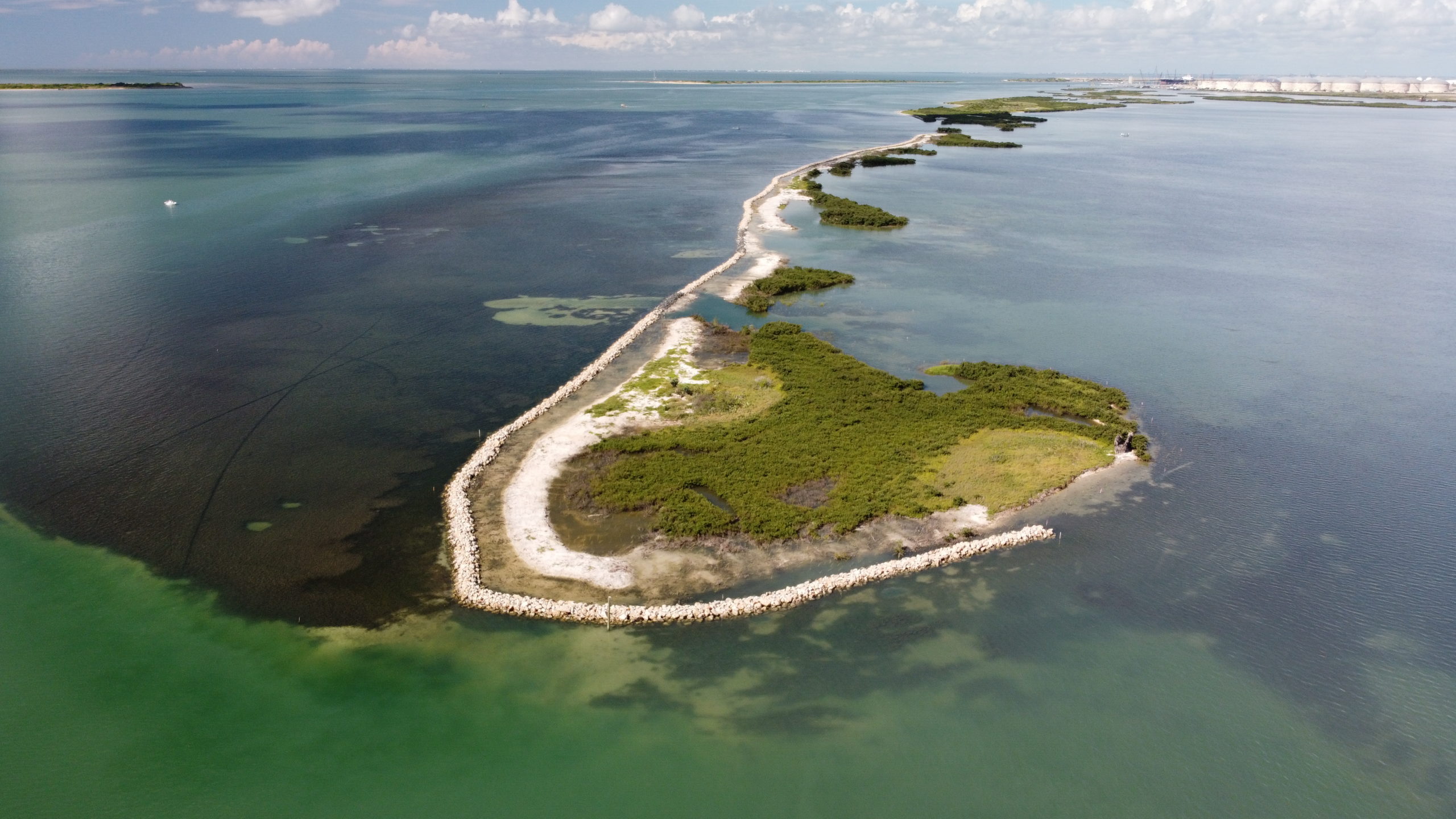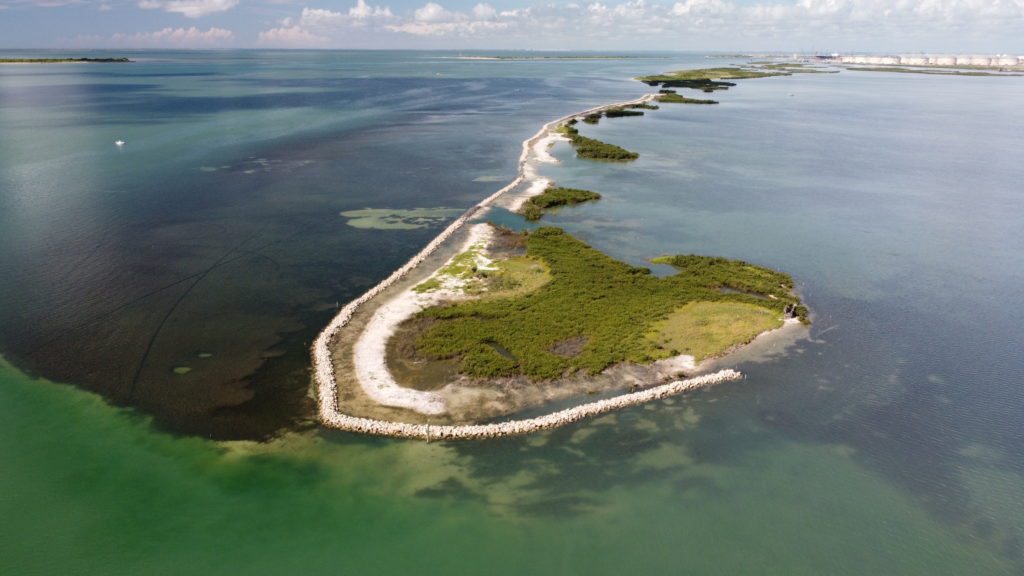

Partnership accomplishes significant Redfish Bay habitat restoration project
ROCKPORT, Texas – September 2020 – Recognizing that Texas coastal wetland loss impacts everyone, Ducks Unlimited has partnered with Coastal Conservation Association Texas (CCA Texas) and the Building Conservation Trust (BCT), the national habitat program of CCA, to support efforts by the Texas Parks and Wildlife Department (TPWD) to restore Dagger Island and protect important seagrass beds in Redfish Bay.
“Dagger Island has provided generations of anglers with incredibly productive places to fish,” said Patrick Murray, president of CCA National. “Restoring this iconic area will ensure that future generations are also able to enjoy everything this unique area has to offer. We are truly proud and excited to be partners with Ducks Unlimited and TPWD on this innovative project.”
Dagger Island was once a nearly continuous island running from the confluence of the Gulf Intracoastal Waterway and the Corpus Christi ship channel to Ransom Island in Redfish Bay. Natural and anthropogenic activities led to erosive forces that decreased the size of the island and broken it into a chain of smaller islands. This decline altered the function and values provided to the Redfish Bay system, including protection of large stands of seagrasses, which are important for water quality in the bay. TPWD developed a shoreline protection master plan for Dagger and Ransom Islands and hired Ducks Unlimited to design and oversee construction of the project. Ducks Unlimited constructed 0.71 miles of breakwater and 1.17 miles of containment levee in order to prepare for the future placement of beneficial use dredge material to restore 25 acres of Dagger Island. Ducks Unlimited also constructed an additional 0.55 miles of breakwater in order to protect an adjacent island.
“Wetland restoration not only benefits waterfowl and fisheries, but the communities around them. The Redfish Bay area has superior recreational opportunities for people to enjoy,” DU Director of Development Matt Bunn said. “Having partners like CCA and BCT make restoring wetlands in this area possible.”
The partners worked together to protect and enhance 5,236 acres of seagrass beds, intertidal wetlands and coastal islands in the Redfish Bay State Scientific Area. Redfish Bay contains the northernmost extensive stands of seagrass on the Texas coast and is one of only three bays that contain all five species of native seagrass in Texas.
Restoration and protection of remnant portions of Dagger Island will protect seagrasses and other essential estuarine wetlands from wave energy caused by winds and large vessel traffic on the Corpus Christi Ship Channel. These seagrass beds are important for waterfowl and fisheries resources, including finfish, shrimp, blue crab and sea turtles.
“Degradation and loss of these islands has been of concern to TPWD for several years. Because of the ecological and economical significance of this area, TPWD is also concerned about the shoreline erosion on Dagger and Ransom Islands and the subsequent impacts on nearby seagrass beds if these islands continue to erode,” Paul Silva, TPWD natural resource specialist, project manager said. “Ducks Unlimited’s wetland restoration expertise and ability to leverage funding makes them a tremendous partner for us in efforts like this one.”
Funding for this project was provided by the National Fish and Wildlife Foundation Gulf Environmental Benefit Fund, the North American Wetlands Conservation Act, Texas Parks and Wildlife Department, the Texas Parks and Wildlife Foundation, Coastal Bend Bays and Estuaries Program, CCA Texas, BCT and Ducks Unlimited.
For an aerial tour of the project, click HERE.













Recent Comments